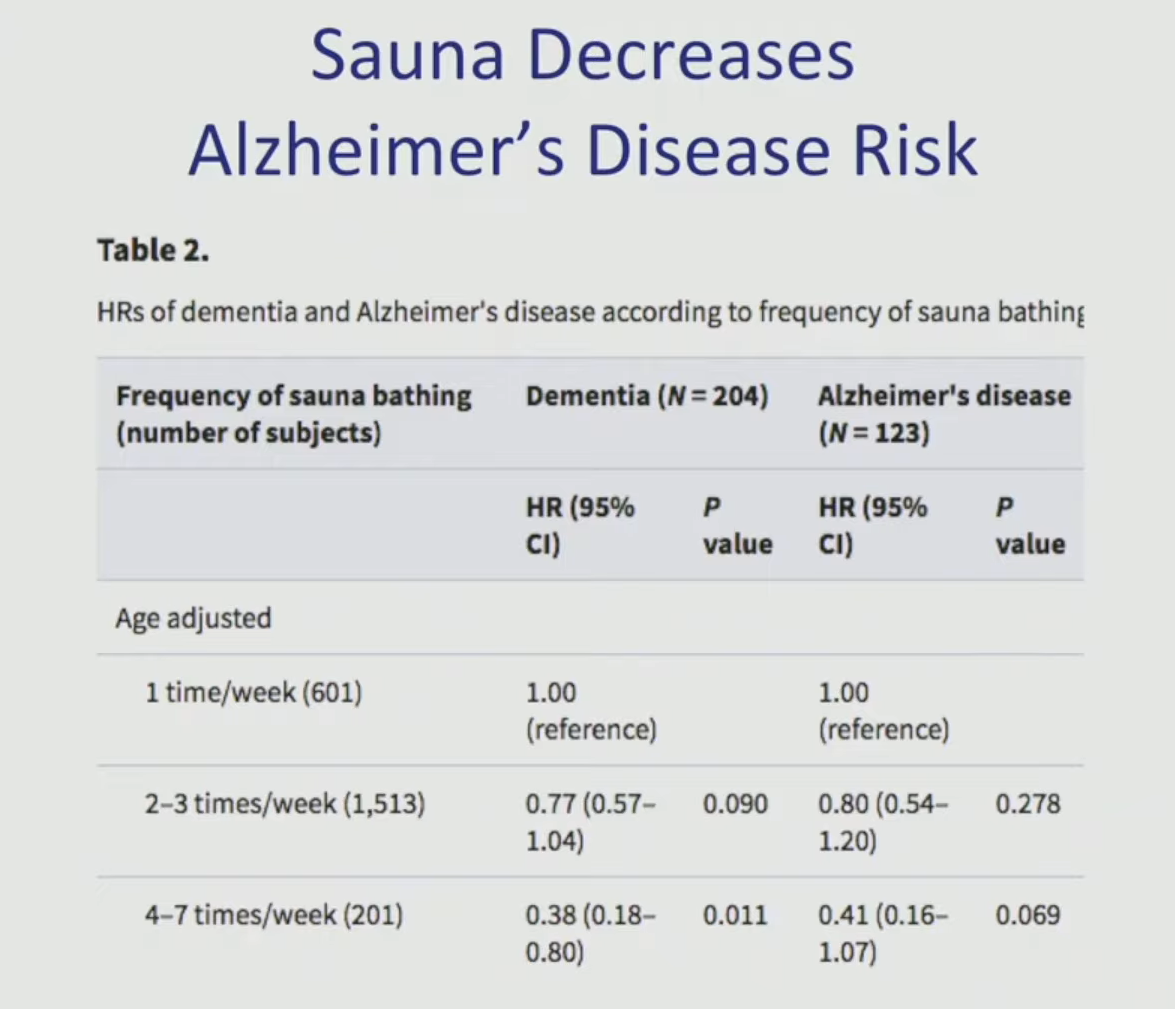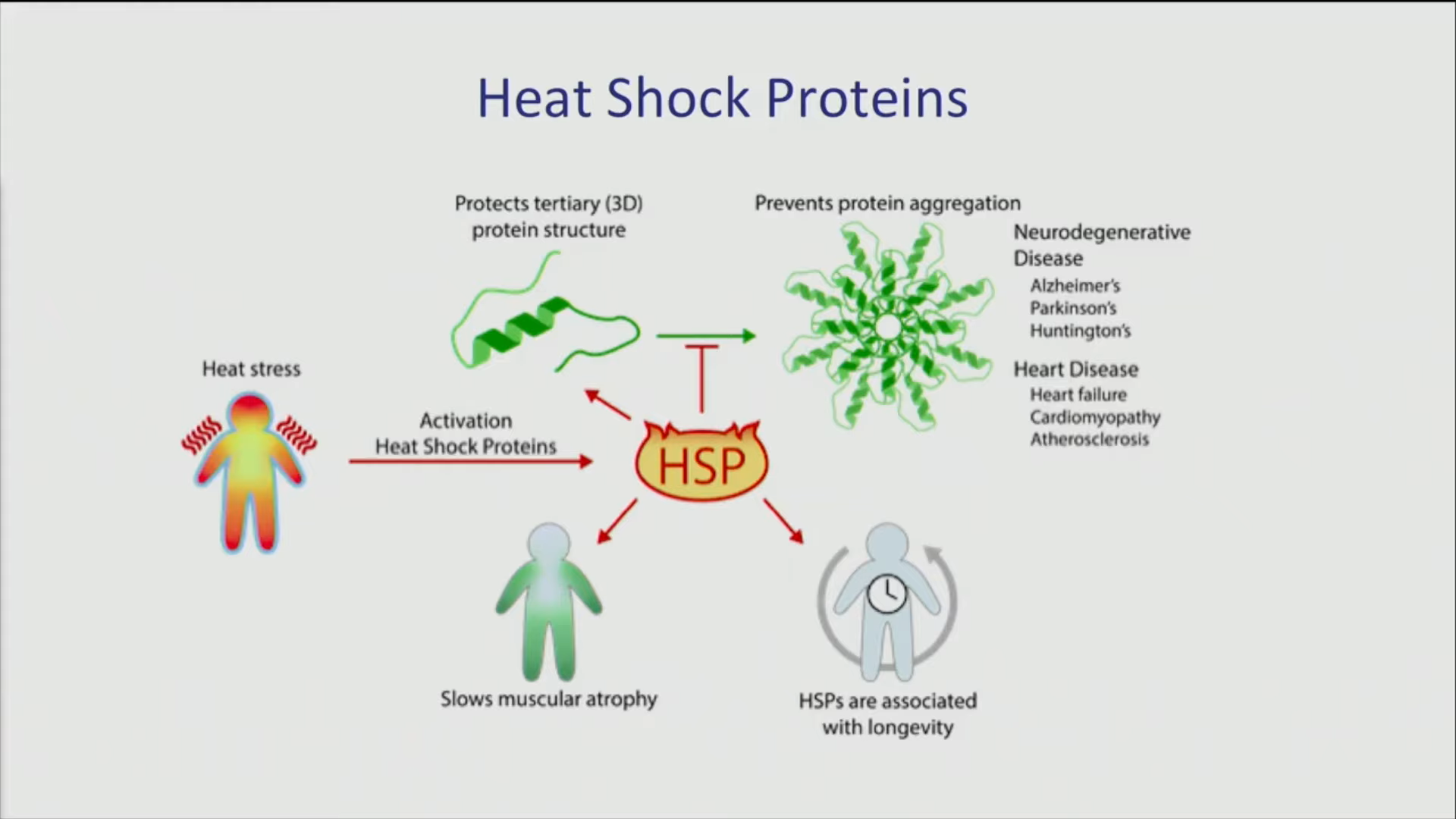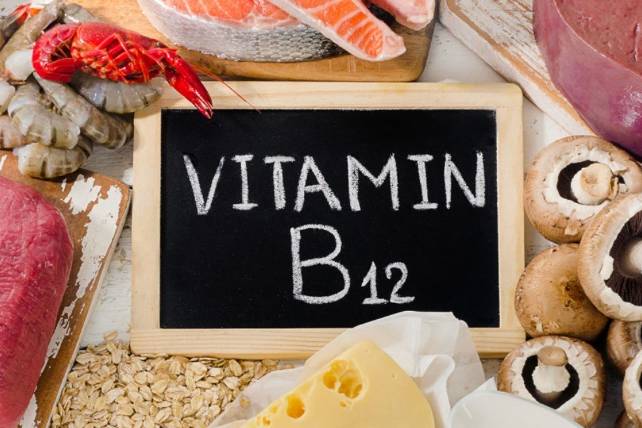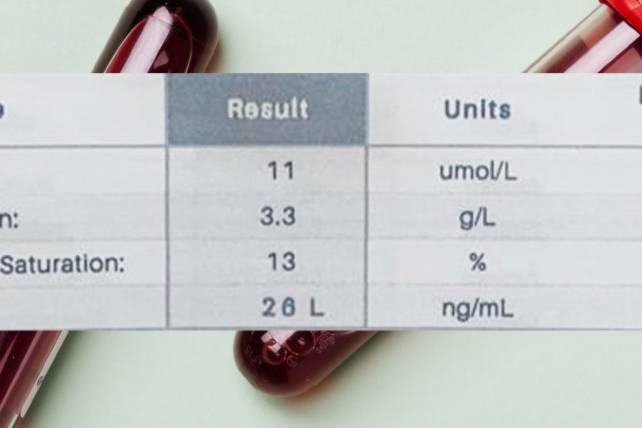Ultimate Resource: The Complete Science of Sauna (Found My Fitness)
- One thing that sauna use has repeatedly been shown to do in observational studies and intervention trials is to induce protective responses against the deleterious biological processes that drive cardiovascular disease and related disability.
- In fact, more studies are showing that some of these responses recapitulate those experienced during exercise. For example, heart rate may increase up to 100 beats per minute during moderate-temperature sauna bathing sessions and up to 150 beats per minute during hotter sessions, similar to the increases observed during moderate- to vigorous-intensity physical exercise. Recently, a single 25-minute sauna session was comparable to moderate physical exercise with respect to cardiovascular measures. Like exercise, long-term sauna use generally improves blood pressure, endothelial function, and left ventricular function, and reduces inflammation.
- Studies out of Finland have shown using the Sauna 4-7x p/w (174F / 78C x20min) is associated with a 40% decrease all-cause mortality, 50%~ lower cardiovascular, 66% lower Alzheimer’s and a 60% lower dementia risk, 60% lower risk for sudden cardiac death, 51% lower risk for stroke, and 46% lower risk for hypertension. This there seems to be a dose dependent effect on sauna use and reduction in disease and ailment.
- 2-3x didn’t show as robust effects but it had 24% decrease in cardiovascular risk.
- Sauna: 180F x 20min where many of the improvements occur
- Just a single sauna session has been shown to lower blood pressure, improve heart rate variability, and improve arterial compliance.
- For example, there is a 50-70% redistribution of blood flow away from the core to the skin to facilitate sweating. You start to sweat. Heart rate increases up to 150 beats per minute which corresponds to moderate-intensity physical exercise.
- The sauna mimics cardiovascular exercise in a lot of respects helping to improve blood vessel pliability/function, improving the hearts efficiency (doesn’t have to do as much work) because there’s increased plasma volume and producing heat shock proteins which have longevity implications. Human studies have shown people with polymorphisms that make them have more heat shock proteins are more likely to be a centenarian.
- Sitting in a 163F (72C) sauna for 30min can increase heat shock proteins by about 50% which lasts for 2 days.
- “20 minutes at 174º F (or 79º C) 2-3 times per week. However, those that used the sauna for 4-7 times a week, had an even more robust effect. This is based on the research of Dr. Jari Laukkanen who found in a pretty large trial of over 2,000 participants that men that used the sauna 2-3 times per week had a 27% lower cardiovascular disease risk, 24% lower all-cause mortality, and a 20% lower risk of Alzheimer’s disease compared to men that only used the sauna one time per week. Men that used the sauna 4-7 times per week had an even larger impact: 50% lower cardiovascular disease risk, 40% lower all-cause mortality, and a 66% lower risk of dementia and a 65% lower risk of Alzheimer’s disease compared to men that used the sauna once a week.
- I have also talked quite a bit about the benefits of heat shock proteins including the prevention of protein aggregates in the brain that lead to Alzheimer’s disease, the growth of new neurons, preservation of muscle mass and more.
- Longevity: Four weeks of using the sauna increased resting anti-inflammatory biomarkers (IL-10) and this adaptation happened faster in the already physically active. [Study]
- Purging Toxincs Including: Cadmium/Mercury/BPA/Hydrophobic toxins
- Sauna mimics moderate submaximal aerobic physical activity from a heart rate, cardiac output and blood pressure response.
- Sauna increases heart rate variability: A 30min Finish sauna session post sauna, lowered HR and increased HRV and PNS activity.
- Three weeks of post-exercise sauna bathing increased run time to exhaustion by 32% in six male distance runners
Sauna Use & Immune Function
- Robust evidence suggests that sauna use promotes mild hyperthermia, which, in turn, induces a wide array of beneficial physiological responses. These responses reduce oxidative stress and inflammation and activate cellular defense systems such as heat shock proteins, which provide protection against many diseases. Data from a 2017 study suggest that sauna use reduces the risk of developing certain chronic or acute respiratory illnesses, including pneumonia, by up to 40 percent.
- Sauna bathing was also shown to reduce the incidence of common colds in 25 participants who used the sauna one to two times per week for six months compared to 25 controls who did not. It is noteworthy that it took three months before sauna use had a protective effect, however. The mechanism by which frequent sauna use reduces the incidence of pneumonia and colds is unknown but might be related to modulation of the immune system. Levels of white blood cells (especially lymphocytes, neutrophils, and basophils) are increased in both trained and non-athletes after sauna use. While these findings are interesting, they are still preliminary and larger studies are needed to confirm.
- Increasing evidence suggests that certain heat shock proteins play a role in both innate and adaptive immunity. Heat shock proteins can directly stimulate innate immune responses, such as the maturation and activation of dendritic cells and the activation of natural killer cells. This indicates there may be a direct role for heat shock proteins in regulating the innate immune response, which plays an important role in the body’s ability to fight off a disease that it has never been exposed to before.
- What If You Don’t Have Access To A Sauna? However, other modalities of heat stress such as hot baths and exercise have been shown to increase heat shock proteins. One study found that participants that either sat in a hot bath from their waist down for one hour or engaged in 60 minutes of moderate cycling on a stationary bike experienced a ~23 percent increase in hsp70 levels compared to baseline.
Mechanics for Lifespan Extension: Heat Shock Proteins (HSP)
- HSP are important for mainlining the proper 3-dimensional structure of proteins which is important for maintaining functions of proteins.
- HSP play a pivital role in preventing and mitigating protein aggregation. Protein aggregation can damage the 3D structure of proteins (which get worse as we age) and form plaques (e.g. beta amaloyid plaques) which have been shown to play a causal role in many neurodegenerative diseases.
- heat shock proteins and heat stress itself can boost longevity. Heat shock proteins have also been shown to prevent and slow the progression of neurodegenerative diseases like Alzheimer’s disease and Parkinson’s disease, slow human muscle atrophy, and are associated with human longevity in genetic studies.
- have been shown to be increased by ~50% after 30 minutes in a 163 F (73 C) sauna in healthy young men and women.” – RP
B-Endorphins
Part of the endorphin response as a result of exercise and heat stress is: beta endorphin
B-endorphins are endogenous opioid neuropeptides used as an analgesic in the body to numb or dull pains that has also bee implicated in thermoregulatory mechanisms, increasing significantly in response to heat stress.
Endorphin is a contraction of “endogenous” and “morphine.” On a molar basis, the analgesic potency of its effects are up to 33-times more potent than morphine. Both morphine and ß-Endorphin act on the u-opioid receptor. Interestingly, the hormonal milieu involved in the bodily response to hyperthermic stress is impaired to varying degrees in a variety of substance abuse conditions, including alcoholism, heroin, and cocaine addiction.
Jeiovå, Daniela, et al. “Rise in plasma a-endorphin and ACTH in response to hyperthermia in sauna.” Hormone and Metabolic Research 17.12 (1985):693-694. (21
Loh, Horace’H., et al. “Beta-endorphin is a potent analgesic agent.” Proceedings of the National Academy of Sciences 73.8 ( 1976): 2895-2898.
Vescovi, P. P.. et al. “Hyperthermia in sauna is unable to increase the plasma levels of ACTH/cortisol. ß-endorphin angvprolactin in cocaine addicts.” Journal of endocrinological investigation 15.9 (1 992): 671-675.
Dynorphin
Is upregulated when your exposed to heat because it cools your body down (another explanation to why we feel good post exercise/heat exposure)
An extremely potent endogenous opioid peptide that acts on the kappa-opioid receptor and is associated with a transient feeling Of dysphoria.
Dynorphin has many different physiological actions, depending upon its site of production. It is involved in addiction, temperature regulation, appetite, circadian rhythm, pain, stress and depression.
This opioid may also be involved in the body’s thermoregulatory response to hyperthermia
Nyberg F. Hallberg M in Research. 162: 277—93, SBN 978-0-444-51926-9. 1764924.
Sauna Decreases Alzheimers Risk

Muscle Hypertrophy Benefits
- Muscle hypertrophy is ultimately the difference between protein degradation and new protein synthesis. When we train for muscle hypertrophy we often put a lot of thought into how to increase muscle protein synthesis… but if we reduce protein degradation, which is an effect heat shock proteins have, we are still increasing our net protein synthesis by increasing the difference between the amount of new synthesis of muscle protein versus the amount of degradation that is happening. This type of effect has been shown in rats where it was shown that a 30-minute heat treatment at a temperature of 106°F (41°C ) given every 48 hours over a 7 day period caused a sustained increase in heat shock proteins during that time frame… big surprise… but more importantly, this actually correlated with a whopping 30% more muscle regrowth than a control group during the seven days after immobilization.
- The other way that hyperthermic conditioning through using the sauna could plausibly affect hypertrophy is by robustly increasing growth hormone. For example, two 20-minute sauna sessions at 176°F (80°C) separated by a 30-minute cooling period elevated growth hormone levels two-fold over baseline. An even more robust effect was found with men using higher sauna temperatures. For example, two 15-minute sauna sessions at 212°F (100°C) separated by a 30-minute cooling period resulted in a five-fold increase in growth hormone. The boost in growth hormone levels is transient and only lasts a couple of hours.
- Summary: Many of the effects of growth hormone are mediated through another hormone known as IGF-1 or insulin-like growth factor-1. IGF-1 activates another pathway in skeletal muscle known as mTOR, which is responsible for new protein synthesis. Muscle cells require amino acids for both growth and repair so if we can also plausibly activate mTOR we’re now sort of completing the circle. With heat shock protein induction we reduce protein degradation and through these endocrine effects, actually increasing protein synthesis… by increasing net protein synthesis, we effectively increase hypertrophy.
Acclimatizing to Heat Stress Exercise & Performing in Dehydrated States in Heat – Dr. Stacy Sims
- Using dehydration and heat stress to increase total blood volume so you can carry and deliver more O2 to tissues (akin to training at altitude) so it can start performing vital responses such as earlier onset of sweating.
- Practical: Take athletes that have been passively dehydrated post session where they’ve been drinking ad libitum and the put them in a sauna for 15-30min.
Heat Stress Effect On Athletes & Performance
Studies on heat stress on athletes show almost a erythropoietin (EPO – key role in production of RBCs) ‘blood doping’ effect from dry sauna exposure when done post workout.
Energy Expenditure During Sauna
Correlations between Repeated Use of Dry Sauna for 4 x 10 Minutes, Physiological Parameters, Anthropometric Features, and Body Composition in Young Sedentary and Overweight Men: Health ImplicationsThis study demonstrated that individuals with higher body mass, body area, body fat mass and muscle mass expend relatively more calories during sauna bathing. The presented results also confirmed previous findings that energy expenditure is influenced by the duration of sauna bathing. During the first 10 minutes, the evaluated males expended around 73 calories on average, but their energy expenditure increased significantly (p<0.001) to more than 134 calories during the last 10-minute session. In participants with the highest values of anthropometric features and body composition parameters, maximal energy expenditure reached 153 calories during 10 minutes of sauna use.
Infrared Sauna vs. Traditional Dry Sauna
- Dry and wet saunas heat the ambient air so heat is transferred from the ambient air to your body whereas the far inared rays use thermal radiation to heat the body directly.
- The air in an infrared sauna is generally cooler but the photons of light that are being released by the infrared panels are said to penetrate more deeply into tissue. Plus as a result, because it’s not as a hot you can stay in there longer.
- The downside to the infrared sauna is your HR takes much longer (around double the time) to reach the same temperature levels in a dry sauna.
- But most of the studies were done that purport positive effects are done with traditional dry saunas.
Finish Dry Sauna Parameteres:
- 79C
- >19min
- 4-7x p/w was most robust (2-3x had positive effects)
Waon Therapy Far Infared Ray Dry Sauna
- 60C
- 45min
- Once a day for 2-3w
Whole-body hyperthermia as a treatment for major depression.
- In Dr. Raison’s randomized, double-blind study published in JAMA in 2016, it was shown that a single session of whole-body hyperthermia (core body temperature was elevated to 38.5 C) produced a significant antidepressant effect in people with major depressive disorder compared to those who received a sham control. The improvements were apparent within a week of treatment and persisted for six weeks after treatment.
- But what is responsible for this antidepressant effect? In a previous episode of the podcast, we learned that sauna use seems to share many qualities of exercise, including improvements in arterial compliance, elevations in heart rate that reach levels you might see in aerobic exercise. Moreover, sauna use has been shown to be associated with reductions in heart-related mortality, dementia and more. The impact of heat stress on the behavior of our immune system through transient alterations in the cytokines expressed by our tissues may be one more area where we can see some overlap.
Association Between Sauna Bathing and Fatal Cardiovascular and All-Cause Mortality Events
Contrast Therapy
One of the main reasons I like to expose myself to the cold are the effects it seems to have on the brain, mood and possibly attention. One of the most likely candidates for eliciting an effect is norepinephrine, which is also the catecholamine that is actually responsible for triggering the browning of fat, making our fat more metabolically active. In fact, in terms of pathways or physiological responses to cold, the release of norepinephrine into the bloodstream, as well as in the locus coeruleus region of the brain, is one of the more profound. Guess what else increases norepinephrine release? Heat as from sauna use. So this is a second way in which both hot and cold, instead of having opposing effects where one cancels out the other, at the molecular level are nudging some of the same pathways in the same direction.
Contraindications:There’s clearly a cultural history in some places of going from a hot sauna right into an icy lake, but there is at least one case study reported in the literature of a heavy smoker having a heart attack, possibly as a result of a plaque rupture caused by coronary artery spasm after doing many, many rounds of contrast immersion over several hours.
To use during Sauna
Halotherapy: breathing salty air during sauna use





